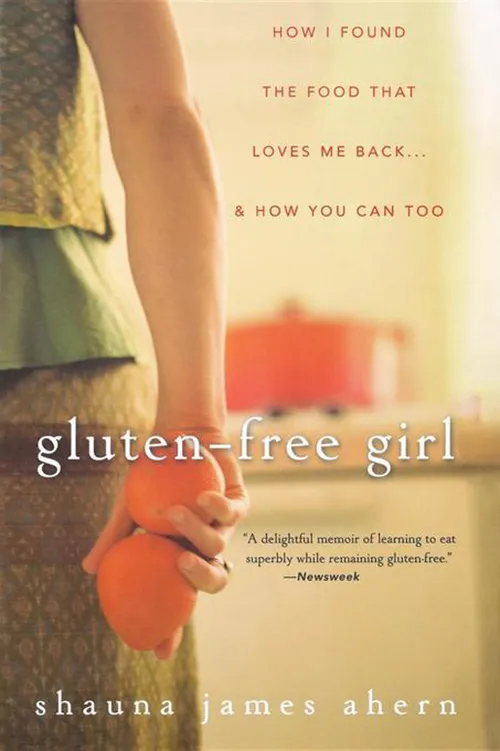An Interesting Look at the History of Celiac Disease and Gluten
If someone is diagnosed with Celiac Disease, the next question they ask is often how. How did I get it? What is the cause of this disease? Maybe the answers to these questions lie in history.
So, let’s discuss where, how and why Celiac Disease became a disease.
Celiac Disease and Gluten Intolerance: A Quick Glance
- Hunter-Gatherer Society: Food was hunted and gathered.
- 2nd Century: Aretaeus of Cappadocia noticed symptoms of malabsorptive diarrhea in children.
- 1888: Samuel Gee described children who suffered from chronic indigestion and improved through diet.
- 1924: Sidney Haas treated eight children with the banana diet.
- 1930s: Dicke noticed that during bread shortage in World War II the children with Celiac Disease did not show symptoms.
- 1960s: The anti-gliadin antibody was discovered.
- 1980s: Celiac Disease was associated with other autoimmune diseases.
- 1990s: DQ2 and DQ8 genes were identified. Anti-transglutaminase antibodies were identified.
Celiac Disease and Gluten Intolerance: A Complete History
Hunter-Gatherer Society
Tens of thousands of years ago, we hunted and gathered our food, hence the term hunter-gatherer. The game and vegetation were organic — untouched and nutrient-dense. In the hunter-gatherer days, gluten intolerance was not an issue because wheat did not exist.
Agricultural Era
Approximately 8,000 to 10,000 years ago, humans began the agricultural era of domestication and growing of grains, grasses, and vegetables.
So far there doesn’t seem too much wrong with this picture yet, right? Sounds like a good idea that we could stay in one place longer and not have to roam so much to find food.
But keep in mind, we are not designed to breakdown wheat proteins into perfect amino acids to be absorbed by the body, and lectins can be toxic.
So how did our ancestors eat wheat and not get sick?
To start with, the whole grain was used and ground down to a flour consistency which included the bran (outer layer) and the germ (seed) and endosperm (starchy carbohydrate) components. The enzymes in the bran and the germ played a role in helping to break down the gluten protein that is contained within the starchy endosperm.
The flour was then fermented. Our ancestors would take several days to make a loaf of bread because yeast didn’t exist. Instead, they used a sour culture which would help the dough rise, but also help break down the gluten and the lectins in the dough to make the bread more edible and somewhat more digestible.
The original wheat varieties didn’t yield many grains per stalk, therefore there wasn’t as much flour produced. However, moving forward another few thousand years you’ll find that farmers began to select the best yield of their crops to re-plant the following season to create a stronger more nutritious food supply. Ok, still not such a bad idea, however with this selective breeding comes the larger portion of gluten protein being present, along with the larger portion of everything, including the lectin.
So, now we have a larger portion of protein in the grain, more toxic lectin, stronger crops yielding more, and more people are eating it than before.
As new things came into existence, they brought new problems with them. The gut was designed over a passage of 2 million years. Now, it was being fed with new antigens that were previously unknown to humans.
Most people slowly adapted to this change. However, some were not able to. Thus, gluten sensitivity and Celiac Disease came to be.
Aretaeus of Cappadocia
Aretaeus of Cappadocia, the second greatest medical scholar after Hippocrates, wrote many volumes of information surrounding medical conditions that went unknown till his work was rediscovered around the middle of the 16th century. In 1552, one thesis titled “On the Causes, Symptoms and Cure of Acute and Chronic Diseases” was published in Latin. He described many clinical conditions of diseases and recorded accounts of epilepsy, pneumonia, tetanus, asthma, uterine cancer, and various kinds of insanity. He also recorded the earliest accounts on diphtheria, heart murmurs, and… celiac disease!
So, it would seem that a few thousand years ago, things began to change, and reports of the celiac disease continued through the ages and into the 1800s.
It was about 8000 years after it’s birth that Celiac Disease began to be identified and named.
Aretaeus of Cappadocia named it as The Coeliac Affection. In Greek, it was called koiliakos. This word comes from the word koelia or abdomen. According to Aretaeus of Cappadocia, “If the stomach be irretentive of the food and if it passes through undigested and crude, and nothing ascends into the body, we call such persons coeliac.”
Dr Mathew Baillie
Thousands of years later, in the 19th century, Dr Mathew Baillie observed symptoms of a chronic diarrheal disorder that was causing malnutrition in adults. He noticed that these people benefited from having a rice diet only. However, his publication did not receive much attention.
Samuel Gee
It was about 75 years after that when an English doctor Samuel Gee gave a lecture about celiac affection to his students. His description of the disease is how we know it today.
Like Baillie, Gee also noticed that key changes in the diet could help to relieve the symptoms. He said that “the allowance of farinaceous food must be small”, and also described “a child who was fed upon a quart of the best Dutch mussels daily, throve wonderfully, but relapsed when the season for mussels was over; next season he could not be prevailed upon to take them.” This is where the idea of a gluten-free diet was born.
The Banana Diet
In the 1920s, a new diet was introduced: the banana diet. Sidney Hans successfully treated eight children with the banana diet. This diet did not contain bread, crackers, cereals, and potatoes. So, basically, it was a gluten-free diet. This knowledge benefited many more children in the coming years.
World War II
About 40 years later, during World War II, a Dutch pediatrician, Dicke, noticed that children with Celiac Disease improved during bread shortages. When Allied plans supplied bread, the symptoms reappeared.
Thus, a few years later, Haas documented that gluten from wheat and rye was causing these symptoms.
Margot Shiner
The next development came in the 1950s. Margot Shiner noticed a specific pattern of damage to the small intestinal mucosa.
So, now they knew three essential elements:
- The gluten from wheat, rye, etc. was the triggering agent.
- There is a recognizable pattern in the proximal small intestinal mucosa.
- An instrument to get biopsies.
In the coming years, it became obvious that Celiac Disease could be diagnosed by a biopsy that showed the atrophy of the villi in the small intestine. This could have other causes, so the doctors did not label this as Celiac Disease due to gluten yet.
ESPGHAN
So, the next steps were to determine whether a 100% gluten-free diet could alleviate these symptoms or not. These criteria were set by the European Society for Pediatric Gastroenterology (today ESPGHAN)
Discovery of Anti-Bodies
A few years later, it was found that these criteria lacked something important: children with Celiac Disease had blood antibodies due to the ingestion of gluten. In 1964, Berger discovered the first category of antibodies known as anti-gliadin antibodies.
Seven years later, Seah et al. discovered the anti-reticulins.
In the 1980s
Then, during the 1980s, Celiac Disease was associated with other conditions such as type 1 diabetes and Down’s Syndrome. Celiac Disease was also showing other signs apart from intestinal issues.
In the late 1980s, an Italian study found that Celiac Disease could be correctly diagnosed in 95% of the cases by doing one biopsy.
DQ2 or DQ8 genes
Later, in the 1990s, Celiac Disease was related to autoimmune diseases that were associated with DQ2 or DQ8 genes. The missing autoantigen was an enzyme known as tissue transglutaminase.
Finally, Celiac Disease was seen as an autoimmune disorder that is triggered by gluten and the autoantigen became known.
Remember to always stay curious and continue learning. If you have any questions or comments, feel free to leave them below. Thank you for taking the time to read my post. Until next time…Jode
Expand your horizons and indulge in your passions with our general interest category blogs. Explore tantalizing gluten-free food reviews, insightful gluten-free book reviews, and enthralling Celiac Disease history stories.
- Innovative – Bob’s Red Mill Gluten-Free: A Game-Changer In The Health Food Industry
- Gluten-Free Book Review – Gluten Is My Bitch!
- Gluten Free Book Review – Celiac Disease – A Hidden Epidemic
- Gluten-Free Game Changers: Gluten Free Donuts
- Book Review: Gluten Free Girl
Remember to always stay curious and continue learning. Thank you for taking the time to read my post. Until next time…Jodes






